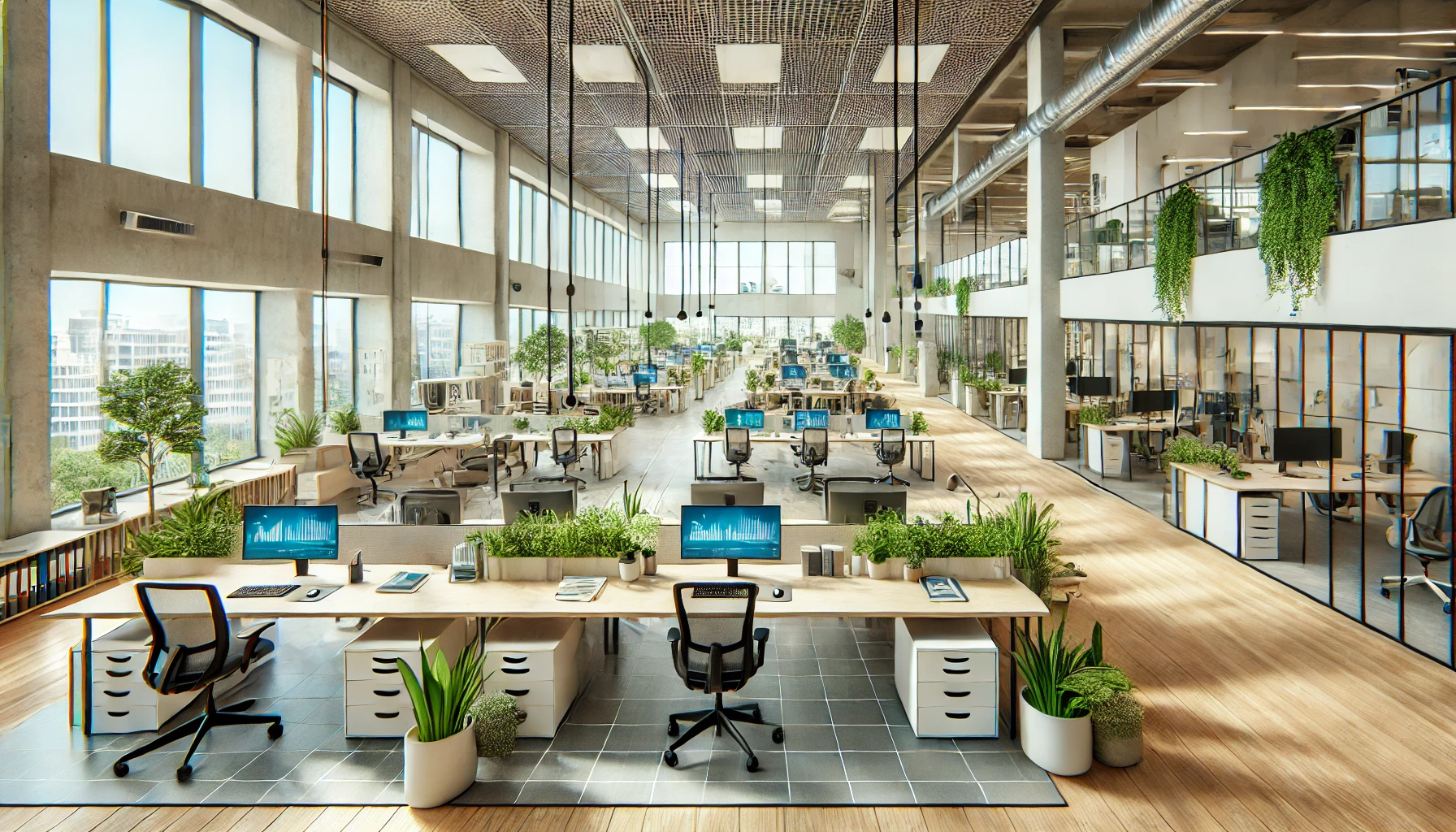Hot Desking vs. Desk Sharing: Two models, one goal

In the modern work environment, flexible workspace concepts dominate. Two prominent models are Hot Desking and Desk Sharing. While CEOs and employees often use these terms interchangeably, there are differences in their execution. However, both concepts share a common goal: when implemented smartly, they reduce costs and save office space.
Hot Desking: Flexibility and cost efficiency
Hot Desking originated in the United States in the 1980s and is increasingly popular today, especially in hybrid work environments. In line with Activity-Based Working, Hot Desking eliminates fixed desks: employees choose any available workstation each day. Combined with home office policies, this model is particularly effective in optimizing office space and reducing costs, as it eliminates the need to provide a dedicated desk for each employee.
However, Hot Desking can also be quite contentious. Without a fixed workstation, employees may find it difficult to develop a sense of belonging to their team or company. The daily search for a free spot and the need to store personal items can complicate work organization and lead to dissatisfaction.
Before implementing Hot Desking, leaders should carefully consider whether this model fits the company and the team, and support the transition with training and transparent communication.
Desk Sharing: Shared workstations for better collaboration
This concept also involves desks, but with a difference: in Desk Sharing, or Shared Desk, employees take turns using the same workstation. This model is particularly popular where remote work is common. For example, one employee uses the desk on fixed office days from Monday to Wednesday, while another uses it on Thursday and Friday. Like Hot Desking, Desk Sharing helps companies avoid unused office space and desks, thus reducing costs.
In addition to optimizing office resource usage, this concept can foster exchange and collaboration among employees sharing the same desk. To ensure all desk sharers feel comfortable, lockable office furniture can help store confidential or personal documents.
Hygiene is also crucial: according to occupational safety laws, employees should have ergonomic desks and chairs that can be adjusted individually, as well as their own headsets and cleaning wipes for the workspace.
Workplace booking: Crucial for New Work success
Employees wandering from office to office in search of a free desk is a big fail in terms of productivity and job satisfaction. Therefore, whether it’s Desk Sharing or Hot Desking, careful organization is essential. Many companies turn to technical support to reserve workplaces in advance for one or several days.
The solution is simple: ReCoTech’s software supports New Work models by enabling automated one-click workplace booking, including monitoring and optimization. It allows for easy coordination of in-office and home office times and efficient management of IT equipment. Smart office use tailored to employees’ needs—this is how modern work is done.
These articles might also interest you

New Partnership with the City of Böblingen: A Step Towards the Future
We are excited to announce the official partnership between ReCoTech and the City of Böblingen! This collaboration marks a significant ...

GEFMA 130-1 Sets New Standards for Sustainable and Efficient Space Utilization in Real Estate
Space management is a crucial aspect of real estate operations. It encompasses all activities related to the planning, use, and ...
New customer for ReCoTech: Welcome to STADT UND LAND
We are delighted to announce that ReCoTech has gained another significant client: STADT UND LAND Wohnbauten-Gesellschaft mbH. Our innovative workspace ...

